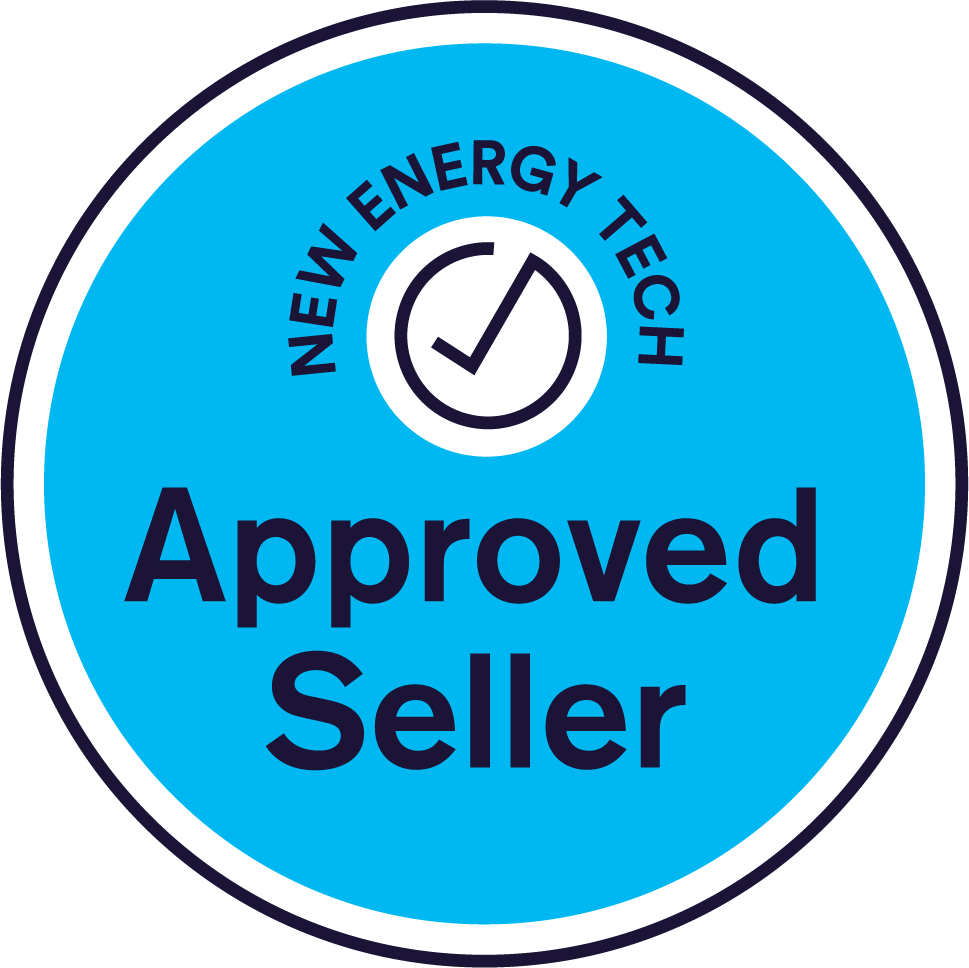As one of Australia's leading solar system installers, we've witnessed firsthand the transformative power of solar energy. With ever-increasing electricity prices and a growing desire for energy independence, home battery storage has become a crucial component of a truly sustainable and cost-effective solar setup. The good news for Australian homeowners is that government initiatives are making solar battery systems more accessible than ever before, with significant solar battery rebate programs available.
This comprehensive guide will delve into everything you need to know about the government solar battery rebate, empowering you to make informed decisions and take control of your energy future.
1. The Australian Solar Battery Landscape: A Brighter Future
Australia boasts some of the highest rates of rooftop solar adoption globally. However, the true potential of solar is unleashed when coupled with battery storage. Batteries allow you to capture excess solar energy generated during the day and use it at night or during peak demand periods, significantly reducing your reliance on the grid and saving you money. The Australian government recognizes this potential and is actively supporting the uptake of battery storage through various solar battery rebate schemes.
2. Understanding the Federal Solar Battery Rebate: "Cheaper Home Batteries Program"
From July 1, 2025, the Australian Federal Government's "Cheaper Home Batteries Program" is set to revolutionize home battery adoption. This significant initiative aims to provide an upfront discount on eligible battery systems, making energy storage more affordable for homeowners and small businesses across the nation.
2.1. How the Federal Solar Battery Rebate Works
The federal solar battery rebate is delivered through an expansion of the existing Small-scale Renewable Energy Scheme (SRES). This means that eligible battery systems will generate Small-scale Technology Certificates (STCs), similar to how solar panels currently do. Installers will typically apply this as an upfront discount on your total system cost, effectively reducing the price of your battery installation.
2.2. Value of the Federal Solar Battery Rebate
The rebate amount is calculated per usable kilowatt-hour (kWh) of battery capacity. In 2025, the estimated value is around $372 per usable kWh. This can translate to substantial savings, potentially reducing the cost of a typical 10-13.5 kWh battery system by approximately $3,300 to $4,000. It's important to note that this rebate value is designed to gradually decrease each year until the scheme concludes in 2030.
2.3. Federal Solar Battery Rebate Eligibility Criteria
To be eligible for the federal solar battery rebate, your battery system must meet certain requirements:
- Capacity: Have a nominal capacity between 5 kWh and 100 kWh, with the rebate applying to the first 50 kWh of usable capacity.
- New Systems: Be a new battery system (not second-hand or refurbished).
- VPP Capability: Be Virtual Power Plant (VPP) capable for on-grid systems (though participation in a VPP is optional).
- Solar Integration: Be connected to a new or existing rooftop solar system. Standalone battery systems without solar integration are generally not eligible.
- Accredited Installation: Be installed by an installer accredited for battery installations by Solar Accreditation Australia (SAA).
- CEC Approved Products: Both the battery system and its inverter must be listed on the Clean Energy Council (CEC) approved product list.
- Commissioning Date: The battery system must be commissioned (switched on) on or after July 1, 2025.
3. State-Specific Solar Battery Rebate and Loan Programs
While the federal solar battery rebate offers a significant nationwide incentive, many Australian states and territories also provide their own complementary solar battery rebate or loan programs. Combining these can lead to even greater savings.
3.1. New South Wales (NSW) Solar Battery Rebate
NSW offers incentives through its Peak Demand Reduction Scheme (PDRS). From November 1, 2024, eligible homes and businesses with existing solar systems can receive incentives ranging from $1,600 to $2,400 off the upfront installation cost of a household battery. An additional incentive of $250 to $400 may be available for connecting the battery to a Virtual Power Plant (VPP).
3.2. Victoria (VIC) Solar Battery Rebate and Loans
Victoria has been a leader in solar incentives. While a direct solar battery rebate scheme has been replaced, eligible households can access interest-free loans of up to $8,800 for solar battery installations, repayable over four years. This makes the upfront cost of battery storage much more manageable.
3.3. Western Australia (WA) Solar Battery Rebate
Western Australia is launching its Residential Battery Scheme by July 1, 2025. This scheme is expected to offer up to 20,000 rebates. Synergy customers (primarily in Perth and the South West) could receive $500 per kWh (up to a maximum of $5,000 for a 10 kWh battery), while Horizon Power customers (regional and remote areas) could be eligible for $750 per kWh (up to $7,500 for a 10 kWh battery). Interest-free loans of up to $10,000 may also be available for eligible low to middle-income households.
3.4. Northern Territory (NT) Solar Battery Rebate
The Northern Territory's Home and Business Battery Scheme provides a grant of $400 per kilowatt-hour, up to a maximum of $12,000, for eligible battery systems.
3.5. Other States and Territories
- Queensland (QLD): The Queensland Battery Booster program recently closed, so no current direct battery rebates are available.
- South Australia (SA): The Home Battery Scheme is closed, but residents in the City of Adelaide can still access the Sustainability Incentives Scheme, offering rebates of up to 50% of the cost, capped at $2,000.
- Tasmania (TAS): Residents can access interest-free loans of up to $10,000 through the Energy Saver Loan Scheme for energy-efficient investments, including solar battery storage.
- Australian Capital Territory (ACT): The ACT offers zero-interest loans up to $15,000 through the Sustainable Household Scheme for energy-efficient upgrades, including rooftop solar panels and battery storage.
4. Combining Rebates: Maximising Your Savings
One of the most exciting aspects of these programs is the ability to potentially combine the federal solar battery rebate with state-based incentives. While specific interaction details are still being finalised, it's anticipated that eligible systems can benefit from both, leading to significant overall savings on your battery installation. For example, a 10 kWh battery in WA could see combined savings of over $8,000 by stacking federal and state rebates.
5. The Application Process for Your Solar Battery Rebate
Applying for a solar battery rebate typically involves several steps:
- Check Eligibility: Thoroughly review the eligibility criteria for both federal and state programs you wish to apply for.
- Choose an Approved Installer: Select a Clean Energy Council (CEC)-approved installer who is also accredited for battery installations by Solar Accreditation Australia (SAA). This is crucial for eligibility.
- Get Quotes: Obtain detailed quotes from certified installers, ensuring they clearly outline the estimated rebate amount.
- Pre-approval (if applicable): Some schemes require pre-approval before installation.
- Submit Application: Your chosen installer will often assist with the application process, submitting necessary documentation including proof of identity, property ownership, and system details.
- Installation and Certification: Once approved, the battery system is installed and a certificate of electrical compliance is signed.
- Claim Rebate: The rebate amount is typically deducted directly from your installation costs, or you may receive it as a payment after installation.
6. Benefits Beyond the Solar Battery Rebate
While the solar battery rebate significantly reduces the upfront cost, the benefits of installing a solar battery extend far beyond financial incentives:
- Reduced Electricity Bills: Store excess solar energy to use during peak evening hours, avoiding expensive grid electricity.
- Energy Independence: Less reliance on the grid means greater control over your energy supply and reduced vulnerability to price hikes.
- Backup Power: Keep essential appliances running during blackouts, providing peace of mind and security.
- Reduced Carbon Footprint: Maximise your use of clean, renewable energy and contribute to a more sustainable future.
- Increased Property Value: Homes with solar and battery storage are increasingly attractive to buyers.
- Virtual Power Plant (VPP) Participation: Potentially earn income by allowing your battery to contribute to the grid during times of high demand.
7. Choosing the Right Solar Battery
Selecting the right solar battery for your home is crucial. Key considerations include:
- Capacity: Determine your household's energy consumption patterns to choose an appropriate battery size.
- Chemistry: Lithium-ion batteries (like LiFePO4) are currently the most popular due to their efficiency, lifespan, and safety.
- Brand Reputation: Opt for reputable brands with proven track records and strong warranties. Popular brands in Australia include Tesla Powerwall, BYD, Sungrow, Alpha ESS, and Enphase.
- Inverter Compatibility: Ensure the battery is compatible with your existing or new solar inverter.
- Warranty: Look for comprehensive warranties covering capacity retention and performance.
8. Short Paragraph: Understanding Usable Capacity
It's important to differentiate between a battery's "nominal capacity" (total storage) and "usable capacity" (the amount of energy that can actually be discharged and used). The federal solar battery rebate is calculated based on the usable capacity, highlighting the importance of understanding this metric when comparing systems.
9. Bullet Points: Key Takeaways for Your Solar Battery Rebate
- The federal solar battery rebate ("Cheaper Home Batteries Program") starts July 1, 2025.
- It offers an upfront discount of approximately $372 per usable kWh.
- Eligibility requires CEC-approved products and SAA-accredited installers.
- State-specific rebates and interest-free loans can be combined with the federal incentive.
- Battery capacity, VPP capability, and solar integration are key eligibility factors.
10. Relevant Internal/External Links (Examples - actual links will vary)
- Clean Energy Regulator (CER) - Cheaper Home Batteries Program (External)
- Solar Accreditation Australia (SAA) (External)
- Clean Energy Council (CEC) Approved Products (External)
11. Frequently Asked Questions about the Solar Battery Rebate
Q1: When does the federal solar battery rebate start?
A1: The federal "Cheaper Home Batteries Program" begins on July 1, 2025.
Q2: Can I get a solar battery rebate if I already have solar panels?
A2: Yes, the federal rebate and many state schemes are applicable to both new solar installations with a battery and adding a battery to an existing solar system.
Q3: Do I have to join a Virtual Power Plant (VPP) to get the solar battery rebate?
A3: No, participation in a VPP is generally optional, but your battery system must be VPP-capable to be eligible for the federal rebate. Some state incentives may offer additional benefits for VPP connection.
Q4: How much can I save with the solar battery rebate?
A4: Savings vary depending on battery size, location, and the combination of federal and state rebates. The federal rebate alone can offer thousands of dollars in savings, with potential for significantly more when combined with state programs.
Q5: Who installs my solar battery system for the solar battery rebate?
A5: Your solar battery system must be installed by a Solar Accreditation Australia (SAA) accredited installer to be eligible for the rebates.
Q6: Can I claim the solar battery rebate for multiple properties?
A6: Generally, property owners can claim the rebate for each eligible property they own, but typically only one rebate per property is allowed.
12. Conclusion: Invest in Your Energy Future with a Solar Battery Rebate
The Australian government's commitment to accelerating battery storage adoption through the solar battery rebate programs presents an unparalleled opportunity for homeowners. By leveraging these incentives, you can significantly reduce the upfront cost of a solar battery system, unlock substantial long-term savings on your electricity bills, enhance your energy independence, and contribute to a cleaner, more sustainable Australia.
As expert solar system installers in Australia, we are here to guide you through every step of the process – from understanding your energy needs to navigating the rebate landscape and installing a high-quality battery system tailored to your home.
13. Call to Action
Ready to take advantage of the government solar battery rebate and transform your home's energy consumption? Contact us today for a free, no-obligation consultation! Our experienced team will assess your unique requirements, explain the available rebates in detail, and provide a customised quote to help you power your home with reliable, sustainable solar battery storage. Don't miss out on this incredible opportunity to save money and secure your energy future!



